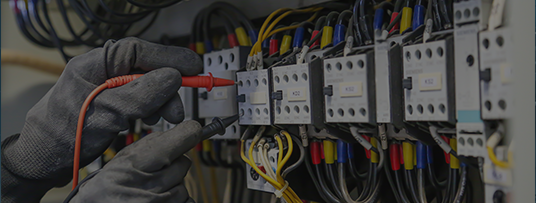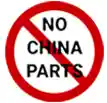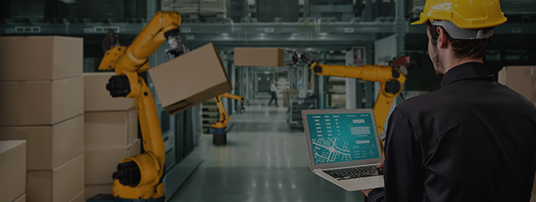Posted on November 30, 2023 Daniel Walton Aerospace
Direct current (DC) drives are the most prominent solution for managing DC motors employed for conveyors, cranes, mixers, robotics, and more. These devices allow operators to fine-tune motor speed, torque, and direction with exceptional control. This guide will cover everything you need to know about the composition of DC drives and how they work, contextualizing why they are vital to efficient motor output.
DC drives can control the performance of DC motors by adjusting the voltage and current supplied to it, in turn managing its speed, torque, and direction. They first convert alternating current (AC) power to DC, then regulate that output to facilitate both stable and programmable motor behavior. Typically housed in compact enclosures or control cabinets, DC drives contain internal circuit boards, heat sinks, and terminal blocks, along with several more imperative components like:
DC drives function as part of a closed-loop control system, typically following these steps:
In a constant torque configuration, the required torque remains steady, regardless of whether the motor’s speed is adjusted. DC drives manage this by delivering a consistent current output, since in DC motors, torque is directly proportional to armature current. This setup is ideal for machines where the mechanical load does not change significantly with speed, such as conveyors, extruders, positive displacement pumps, and mixers.
In variable torque applications, the amount of torque needed increases as the motor runs faster. DC drives can respond to this demand by adjusting current output proportionally to motor speed. This approach is best suited for applications like centrifugal fans, blowers, and pumps, where mechanical resistance depends on fluid or air movement. Operating with a variable torque profile allows the drive to optimize energy usage at lower speeds, reduce mechanical stress, and extend equipment life.
In all, DC drives offer customizable motor performance for a wide range of machinery, as well as facilitate better resource management and protection from power surges. They must be properly configured and of fitting quality for the operations they are matched with, so if you are interested in procuring DC drives, turn to Dash Automation Parts. As a procurement platform operated by ASAP Semiconductor, you can expect everything on our website to be fully vetted and from trusted entities.
Beyond our selection of thousands of products for diverse purposes, we also promise competitive pricing and timely delivery for every order. We even strive to accommodate complex or unique requirements, our team being available at any time to discuss the specialized solutions we may be able to offer. If you are ready to see how we can surpass your expectations for fulfillment, take the first step of purchasing today.
Direct current (DC) drives are the most prominent solution for managing DC motors employed for conveyors, cranes, mixers, robotics, and more. These devices allow operators to fine-tune motor speed, torque, and direction with exceptional control. This guide will cover everything you need to know about the composition of DC drives and how they work, contextualizing why they are vital to efficient motor output.
DC drives can control the performance of DC motors by adjusting the voltage and current supplied to it, in turn managing its speed, torque, and direction. They first convert alternating current (AC) power to DC, then regulate that output to facilitate both stable and programmable motor behavior. Typically housed in compact enclosures or control cabinets, DC drives contain internal circuit boards, heat sinks, and terminal blocks, along with several more imperative components like:
DC drives function as part of a closed-loop control system, typically following these steps:
In a constant torque configuration, the required torque remains steady, regardless of whether the motor’s speed is adjusted. DC drives manage this by delivering a consistent current output, since in DC motors, torque is directly proportional to armature current. This setup is ideal for machines where the mechanical load does not change significantly with speed, such as conveyors, extruders, positive displacement pumps, and mixers.
In variable torque applications, the amount of torque needed increases as the motor runs faster. DC drives can respond to this demand by adjusting current output proportionally to motor speed. This approach is best suited for applications like centrifugal fans, blowers, and pumps, where mechanical resistance depends on fluid or air movement. Operating with a variable torque profile allows the drive to optimize energy usage at lower speeds, reduce mechanical stress, and extend equipment life.
In all, DC drives offer customizable motor performance for a wide range of machinery, as well as facilitate better resource management and protection from power surges. They must be properly configured and of fitting quality for the operations they are matched with, so if you are interested in procuring DC drives, turn to Dash Automation Parts. As a procurement platform operated by ASAP Semiconductor, you can expect everything on our website to be fully vetted and from trusted entities.
Beyond our selection of thousands of products for diverse purposes, we also promise competitive pricing and timely delivery for every order. We even strive to accommodate complex or unique requirements, our team being available at any time to discuss the specialized solutions we may be able to offer. If you are ready to see how we can surpass your expectations for fulfillment, take the first step of purchasing today.

 The only independent
The only independent

 All Orders are Fulfilled in the U.S.A.
All Orders are Fulfilled in the U.S.A. All shipments must comply with U.S.A export laws.
All shipments must comply with U.S.A export laws. No exceptions.
No exceptions.

“We Proudly Support Intrepid Fallen Heroes Fund that serves United States Military Personal experiencing the Invisible Wounds of War : Traumatic Brain Injury (TBI) and Post Traumatic Stress (PTS). Please visit website (www.fallenheroesfund.org) and help in their valiant effort”.
We hope that you will visit us again the next time you need industrial parts and make us your strategic purchasing partner.
Request for Quote